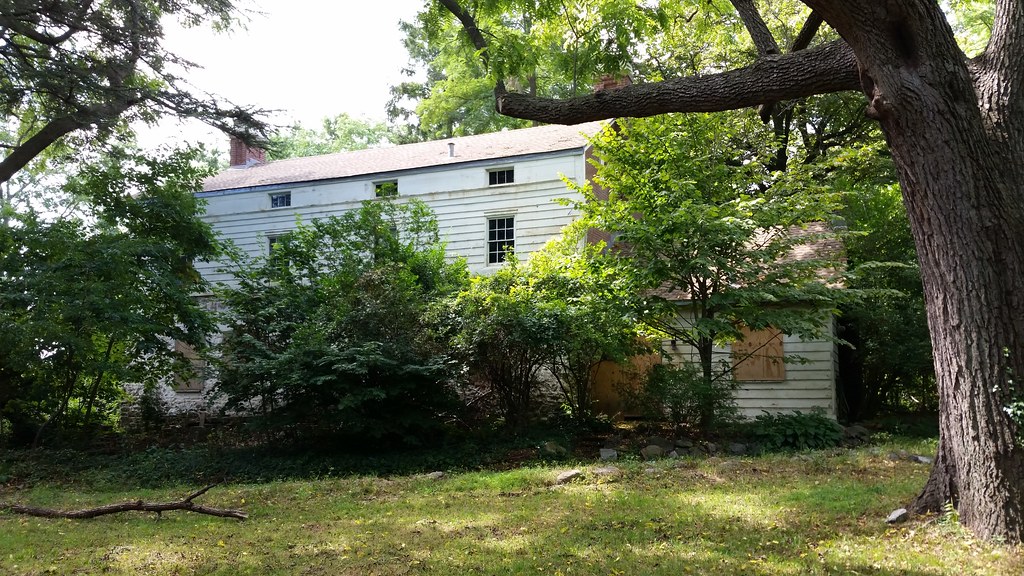
The oldest part of this house — half of its basement — can be traced back to a one-room stone shelter erected here in the late 1600s, but most of the current structure dates to the 1700s and 1800s. The last major addition was built by a young Frederick Law Olmsted, who moved here from Connecticut in 1848 at the age of 25 to pursue his agricultural ambitions. The property had previously been used to grow wheat, but Olmsted turned the place into a fruit farm and tree nursery, while also dabbling in landscape design. (Some of the trees he planted are still standing, including the black walnut at right.) A friend of his later recalled:
The whole place was as dirty and disorderly as the most bucolic person could desire. It was on the surroundings of the house that Olmsted first showed his genius in landscape construction.Olmsted would go on from these modest beginnings to become America's foremost landscape architect, most famously designing Central and Prospect Parks with his partner Calvert Vaux. The Parks Department, appropriately, purchased his Staten Island house in 2006, but does not currently have the funds to renovate it and open it to the public.
He moved the barns and all their belongings behind a knoll, he brought the road in so that it approached the house by a graceful curve, he turfed the borders of the pond and planted water plants on its edge and shielded it from all contamination. Thus, with a few strokes and at small expense he transformed the place from a very dirty, disagreeable farmyard to a gentleman's house.



Looks like they could use a little of his magic touch today …
What a shame that it is sitting in such disrepair.